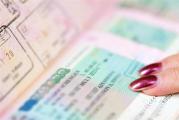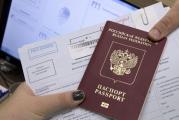All about the Schengen visa
Well, let the euro exchange rate grow, but politicians cannot agree on a visa-free regime. Vacationing in Europe is still great, even if you have to be more careful about money. For everyone who wants to clarify all the subtleties for themselves, we have prepared detailed instructions for a Schengen visa. What types are there? Where is the easiest place to get it? What documents are required? What do travel agents say? And many more useful tips and necessary facts in our article.
What is a Schengen?
The word "Schengen" has been around for almost 20 years since Belgium, Luxembourg, the Netherlands, France and Germany signed an agreement on a common visa area. It was then that they gradually began to eliminate checkpoints on the borders of European countries, making life easier for many travelers. Today, the Schengen area includes 25 countries, but the Schengen visa is useful not only in them.
But first things first.
What Schengen visas can tourists get?
The Schengen visa is common to all countries of the Schengen agreement and gives the right to freely travel through them. In this, all visas of the Schengen countries are the same.
- The first parameter of a visa is its “multiplicity”, i.e. how many times a tourist can cross the border of the Schengen area.
- The second characteristic of a visa is the period of validity: for how long a visa can be used.
- The third parameter is the length of stay in the country. Shows how many days you can stay in the Schengen area in total.
In what combination lies the cherished multivisa, it will be clear from the table:
Single | Short term | Validity: maximum 30 days |
Long term | Multiplicity: you can enter once Validity: from 180 days Duration of stay: same as the validity period |
|
Multiple | Double | Multiplicity: you can enter twice Validity: from 3 days to 1 year Length of stay: individually, at the discretion of the consul |
Multivisa | Multiplicity: you can enter an unlimited number of times Validity: from 3 days to 5 years Length of stay: no more than 90 days every six months |
Of course, the ideal option is a multivisa. We will analyze it with an example.
So, happy tourist N left the visa center, say, Italy, unpacked the envelope and saw on the visa stamp the inscription MULT for 2 years and the number of days ‒ 360. The latter in no way means that citizen N can write a novel in a villa for a whole year in Spain or look for the Higgs boson in a Swiss resort. Within two years, you can enter and leave as many times as you like. And although there are 360 days in total, for every six months there cannot be more than 90. If even simpler, then 3 months in Europe ‒ 3 months at home.

Who issues multiple visas?
Having analyzed the theory, let's move on to practice. We will tell you which countries are included in the Schengen zone and, most importantly, where and under what conditions you can get a multivisa. “What difference does it make where and how, because you still need to submit documents to the country where you are going?” ‒ an amateur tourist will ask and he will be wrong. Why? We'll tell you a little later.
Countries | Type of Schengen visa |
||
Single |
|||
Multi. It is possible to obtain semi-annual visas for those who have several German single-entry visas. Extremely loyally issue multiple visas for six months or more with business invitations or with invitations from medical clinics |
|||
Since mid-2013, an order has been in force to increase the multivisa for Russians for 3 years. In practice, having previously only single entry visas, you can count on an annual multivisa |
|||
Single |
|||
Iceland | Semi-annual multiple visas are often issued with a stay limit of 90 days, respectively. However, in the case of Spain, it is possible to get a visa marked LTV, which formally prohibits leaving the territory of Spain. Fortunately, this situation is extremely unlikely. |
||
Since the autumn of 2013, in honor of the year of Italy in Russia, there is a great chance to get a two-year multivisa, but only if you have several previously issued Schengen visas By all accounts, today Italy has a loyal visa policy towards Russians. |
|||
If you have Latvian visas, you can apply for a six-month multivisa. But this does not apply to Yekaterinburg, where the Hungarian consulate deals with the visa issues of Latvia as a matter of friendship. |
|||
Single |
|||
Luxembourg | Single |
||
Multi, mostly for a year. Condition: two or more Schengen visas in the passport |
|||
Norway | It is possible to obtain a multivisa for six months or a year, only if you have closed Schengen visas |
||
Single |
|||
Slovakia | They repeatedly promised to start issuing five-year multi-visa visas, but today the maximum period is 3 years, but more often 1 or 2 |
||
Slovenia | A multivisa is a maximum of a year, most likely six months. Must have used Slovenian or Schengen visas |
||
There is a simplified procedure for residents of St. Petersburg and its environs. We will not paint, every Petersburger already knows. For other regions, there is a chance to get semi-annual or annual multiple visas, but only if before that there were several strictly Finnish visas in the passport. On the other hand, the Finns have minimal requirements for applicants: no job certificates and financial security are needed. |
|||
In Moscow, visas are issued for a year or more in the presence of closed Schengen visas. Periodically, tourists receive visas for 5 years, but this is rather an exception for holders of multiple visas in the past |
|||
Obtaining semi-annual and annual visas is possible, including in Yekaterinburg, but, most likely, previous Czech visas will be required. The consul may call the applicant for a personal conversation. In Moscow, closed Schengen visas of both the Czech Republic and other states can serve as the basis for obtaining a multivisa for a year or six months |
|||
Multiple visas for six months and a year are rarely issued, by personal order of the consul |
|||
Multivisas are issued mainly to residents of the North-West region in the presence of Estonian or Finnish closed visas. And having used annual multiple visas in your passport, you can also apply for a five-year corridor, but this, of course, is a rarity |
Important: All information is for informational purposes and is current at the time of writing.
Where to get a Schengen visa?
The embassy is responsible for issuing visas, but many countries have opened special visa centers that are responsible exclusively for visa issues. The advantages of these centers are efficiency and customer-oriented approach. For example, it is unlikely that you will be able to make an appointment at the embassy at a convenient time, and the visa consideration period is about 2 weeks.
True, in addition to the standard visa fee, you will have to pay for the services of the center, but, firstly, it is not so expensive, about 30-40 €, and secondly, it is still cheaper than the services of offices of varying degrees of integrity.
Most visa centers provide a service for the delivery of ready-made passports with visas. The cost of delivery of one passport is about 500 rubles.

Visa centers of countries that issue multiple visas more often than others:
It is necessary to clarify the list of documents in advance, it differs in different countries. As a standard, in addition to Finland, you will need a certificate indicating income from work, a bank statement (financial security), confirmation of a reservation from a hotel or an invitation from a citizen of the country of entry, a receipt for air tickets or STS for a car with a green card issued for the duration of the trip (insurance ), an insurance policy in the name of the applicant, two photos. However, there are not always noticeable subtleties that we advise you to pay attention to:
- How are copies of the Russian Federation passport made - from one or both sides of the sheet, all pages or just filled ones? Requirements are different.
- How much financial security for each day is required in a particular country? Usually it's around 60-70€, but the requirements often change.
- Photo format may vary slightly from country to country. Just coming to a photo studio and saying “for a Schengen visa” will not work - the requirements will have to be clarified in advance.
Misconceptions about the Schengen visa
Let's start with harmless mistakes that only affect the outlook.
Firstly, a country that is part of the Schengen agreement is not necessarily a member of the European Union, and vice versa. For example, the UK or Ireland are members of the EU but require separate national visas. And you can get to Norway or Switzerland on a Schengen visa, but they are not part of the European Union.
Secondly, the currency and the visa regime are in no way connected. Not all countries in the Schengen area have the euro.
And now about the myths that tourists constantly have to face. Especially often, these arguments are resorted to by companies that, for several thousand rubles, will kindly take the documents to the visa center.
Myth #1. "Country of first entry". Allegedly, it is necessary to cross the border of the Schengen zone only in the country that issued the visa. Nothing like this. Such a rule simply does not exist - this is an invention of cunning "helpers" from dubious offices. You can enter even with a Spanish visa to Estonia, even with a Czech visa to Portugal. There is a concept of “main country of residence”, i.e. if a tourist plans to visit Belgium for 3 days, Germany for a week and Luxembourg for 2 days in one trip, then a visa must be issued by Germany, since the tourist will spend most of the time there. But in practice, plans can always change and in fact it is simply impossible to control this, there is no responsibility for violating this rule.
Myth #2. “If you do not enter through the country that issued the visa, then there will be problems with new visas.” This is an outright lie. For future applications, the very fact of having a Schengen visa and the absence of violations along the lines is important. Everyone is well aware that, for example, a trip to Switzerland can start with renting a car at Milan airport, if it's cheaper. There will be no problems.
Myth #3. “And if the border guard starts asking why I flew to Vienna with a French visa, but I can’t clearly explain, and he won’t let me into Austria?” Border guard questions are a formality. If you have a visa for any of the Schengen countries, you can answer “tourism” to all questions, nod your head and smile. Ignorance of the language is not a reason for refusing entry.
Myth number 4. “Our agency officially guarantees the receipt of a visa. Put your money here." The decision to issue a visa does not depend on whether you get it yourself or through an intermediary. It all depends on the accuracy or at least on the completeness of the information provided.

Where else can you go with a Schengen visa?
And now a surprise - with a Schengen multivisa visa you can get not only to the 25 countries participating in the agreement.
There are a number of states, as a rule, these are new members of the EU or aspiring to it, which allow entry into their territory both on a national and on a Schengen visa.
The country |




